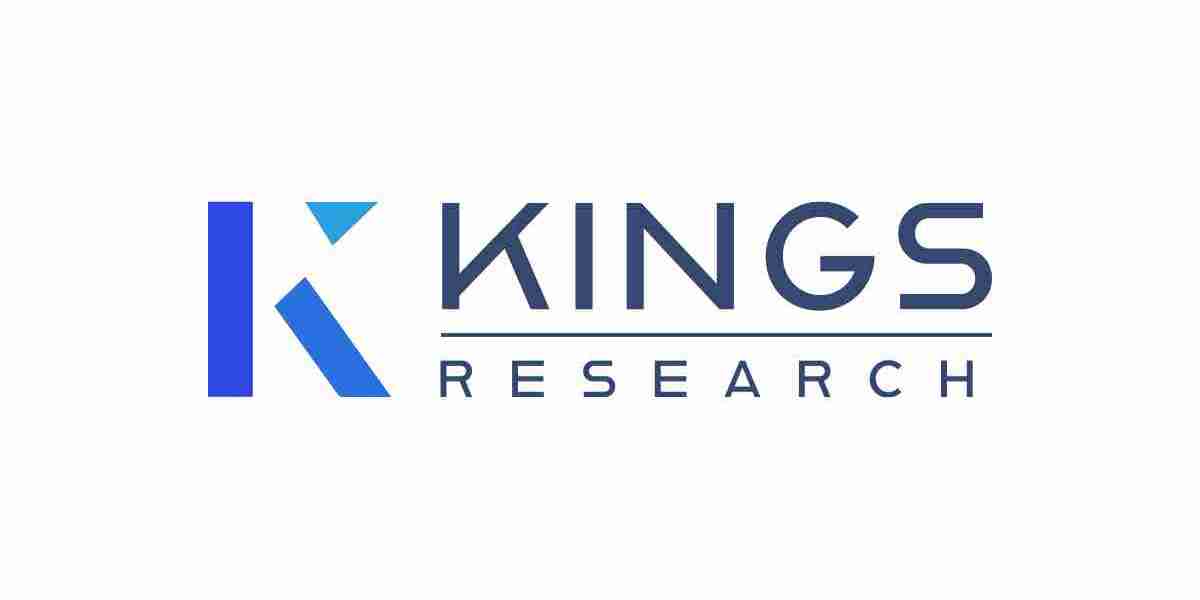Food Waste Management Market Comprehensive Outlook and Strategic Insights (2025 – 2032)
The global food waste management market continues to garner significant attention, spurred by rising environmental concerns, heightened regulatory pressure, and evolving consumer behaviours. With the market valued at USD 45.23 billion in 2024, and projected to grow from USD 47.50 billion in 2025 to USD 69.96 billion by 2032, the market is expected to exhibit a compound annual growth rate (CAGR) of approximately 5.69 % over the forecast period.
Market Overview
Food waste management refers to the collection, transportation, recycling, disposal or conversion of surplus or discarded food resources across the supply chain—from production and processing to distribution, retail and consumption. As food waste presents severe environmental, economic and social challenges — including greenhouse gas emissions, resource wastage (water, land, energy), and supply-chain inefficiencies — there is strong impetus for stakeholders to adopt effective solutions. The market has developed into an ecosystem encompassing services (such as food-waste collection, logistics, treatment, recycling and energy generation), technology solutions (e.g., digesters, composting systems, anaerobic bioreactors) and platforms to minimise food loss, redistribute surplus food and convert waste into value-added products (fertilizers, biofuels, animal feed). The projected growth to nearly USD 70 billion by 2032 underscores the increasing urgency and business opportunity in this domain.
Market Drivers, Dynamics & Trends
Several inter-locking factors are propelling the growth of the food waste management market:
Environmental & regulatory impetus: Governments worldwide are tightening regulations and instituting targets to reduce food waste, landfill diversion and methane emissions. This regulatory impetus is forcing food-supply chain stakeholders and waste-management firms to integrate more sustainable solutions.
Resource-efficiency and cost-saving pressures: Rising costs for disposal, landfill taxes and carbon emissions are incentivising businesses to minimise wasted food and invest in waste-to-value solutions (e.g., energy recovery, composting).
Circular-economy models and innovation: The shift from linear to circular-economy thinking means food waste is increasingly viewed as a resource rather than simply a liability. Technologies that upcycle food waste into compost, bio-gas, animal feed or other value-added outputs are gaining traction.
Consumer awareness and supply-chain scrutiny: Greater public awareness of sustainability issues, food-waste statistics and ethical consumption is pushing food-service providers, retail chains and manufacturers to adopt more robust food-waste-management policies (including redistribution of surplus food and improved inventory/expiry-management systems).
Technological advancement & service innovation: New digital platforms for waste-tracking, smart bins, IoT-enabled sorting and automatic food-waste measurement are emerging. On the service side, integrated waste-collection and treatment models—coupled with partnerships across the supply chain—are becoming more common.
On the dynamic side, the market faces certain constraints and moderating factors. The heterogeneity of food-waste streams (residential, industrial, retail, hospitality) poses logistical complexity; treatment infrastructures are capital-intensive and often regionally fragmented; and in many regions, the economic value recovery from food-waste processing remains limited. Nonetheless, the trend is increasingly toward consolidation, vertical integration, and greater collaboration across supply-chain and waste-management players.
Some of the key trends shaping the market include up-scaling of anaerobic digestion and bio-gas plants dedicated to food waste, growth in on-site composting and food-waste-reduction programmes in the retail and hospitality sectors, digitalisation of waste tracking and analytics, and expansion of service-models that integrate collection logistics, processing and closed-loop recycling of nutrients. In addition, more emphasis is being placed on diverting food waste away from landfill toward higher-value uses, aligning with international targets such as those set by sustainability frameworks.
Market Segmentation
To comprehensively understand growth opportunities and strategic positioning, the food waste management market can be segmented along several dimensions:
By Waste Type: The market addresses multiple categories of wasted food materials, including cereals; dairy and dairy products; fruits and vegetables; meat and poultry; fish and seafood; oilseeds and pulses; roots and tubers; and other waste types (such as bakery products and packaged foods).
By Service: The service-type segmentation covers collection; transportation; disposal and recycling. Collection of food waste remains a dominant segment given its broad applicability and regulatory mandate in many jurisdictions.
By Source: Sources of food waste include residential (households), industrial (food manufacturers, processing plants), food-service (restaurants, hospitality), retail (supermarkets, outlets) and municipal/semi-municipal sources. Residential food waste accounts for a substantial share in many markets, emphasising the need for consumer-facing solutions as well as commercial-scale interventions.
By Application/End-Use: Applications of processed food waste include feed (animal feed derived from food-waste streams), fertilizers (composting and nutrient recovery), bio-fuel (anaerobic digestion producing biogas or bio-methane), power generation, and other applications (including packaging feed-stock, biochemical production, industrial intermediates).
By End-User: End-users driving adoption include primary food producers (farmers, plantations), food manufacturers (processing plants, packaging), food distributors and suppliers, food service providers (restaurants, hotels, catering), municipalities and households. Each of these end-users has distinct drivers and constraints. For instance, food manufacturers focus on internal waste-reduction and regulatory compliance; municipalities emphasise public-service waste-diversion; households require simplified systems and behaviour change.
Competitive Landscape & Key Players
The global food waste management market is characterised by a mixture of large global waste-management firms, specialist food-waste technology providers, and vertically integrated players in the food-supply chain. Prominent companies include major waste-management and environmental service firms that have diversified into food-waste segments. These key players are actively investing in process innovation, geographic expansion and strategic partnerships.
Major companies operating in the market include globally recognized waste-management organizations, food-waste-specialist technology firms, and service operators that span collection to processing. These include firms such as Veolia Environnement S.A., Waste Management, Inc., Remondis SE & Co. KG, Republic Services, Inc., SUEZ S.A., among others. These organisations are enhancing their food-waste-specific capabilities via acquisitions, technology roll-out and integrated offering expansions.
Recent strategic developments exemplify the pace of market consolidation and innovation: acquisitions of food-waste processing specialists by waste-management firms, launch of digital platforms for food-waste monitoring, and partnerships between retailers and waste-service providers to close the loop on surplus-food redistribution. These actions underscore the increasing maturity of the market and the imperative of value extraction from food-waste streams.
Recent Developments
In recent years, the industry has witnessed several noteworthy developments. Waste-management companies are expanding into the food-waste segment by integrating anaerobic digestion, composting and nutrient-recovery units dedicated to food-waste streams. Retail and hospitality chains are deploying food-waste measurement and reduction initiatives—often utilising smart-bin technologies, sensors and redistribution-platforms. Food-service providers are increasingly required to comply with local mandates on food-waste diversion and reporting, driving demand for outsourced food-waste-management services. On the technology front, innovations around food-waste-to-biogas, food-waste-to-animal-feed and food-waste-to-fertiliser frameworks are gaining commercial traction. In addition, municipal programmes in many regions are being extended to include separate food-waste collection and processing—facilitating higher diversion rates from landfills.
Regional Analysis
Regionally, the global food waste management market exhibits both mature and emerging dynamics.
North America currently holds a significant share of the market, driven by well-established regulatory frameworks around waste diversion, high consumer awareness, and advanced waste-management infrastructure. The region continues to attract major investment and innovation in food-waste-treatment solutions.
In Europe, similar drivers exist—stringent targets on food-waste reduction, well-developed waste-collection systems, and public-sector initiatives (including subsidies and regulatory mandates) push the adoption of advanced food-waste management. The region is characterised by strong collaboration between public agencies, waste-service providers and food-industry stakeholders.
Asia-Pacific is emerging as a high-growth region for food waste management. Rapid urbanisation, changing dietary patterns, expanding food-service and retail sectors, and increasing regulatory focus on waste and sustainability are all contributing to notable demand growth. Countries in this region are investing both in infrastructure and in behaviour-change programmes to manage the rising volumes of food waste. Latin America, Middle East & Africa also offer growth potential, albeit from smaller bases; regulatory impetus, urban-waste-management upgrades and increasing corporate sustainability initiatives are expected to support growth in these regions.
Given the global projection to reach USD 69.96 billion by 2032, regions such as Asia-Pacific and Latin America are expected to grow at above-average CAGRs, closing the gap with more mature markets.
Future Outlook
Looking ahead, the food waste management market is poised for sustained growth and transformation. Key future-facing dynamics include:
Integration of digital and smart-solutions: Waste-tracking platforms, AI-enabled sorting, sensor-based bin monitoring and real-time analytics will increasingly underpin operational efficiency and compliance.
Expansion of food-waste-to-value chains: Rather than mere disposal or composting, food waste will be redirected into higher-value applications such as bio-methane production, nutrient-rich feedstocks, industrial biochemicals and circular-input loops.
Policy and target escalation: Many regions are moving toward zero-food-waste targets, mandatory food-waste separation and landfill-diversion mandates. This will accelerate service outsourcing, infrastructure investment and innovation.
Supply-chain collaboration and food-redistribution platforms: Retailers, food-service chains and waste-management firms will increasingly partner to minimise food waste at source, redistribute surplus food and integrate waste-management upstream in the value chain.
Investments in emerging markets: Growth in countries with currently limited infrastructure will be driven by urban-waste-management modernisation, government-funded programmes and increasing corporate sustainability mandates.
Mergers, acquisitions and consolidation: As the market matures, we expect further consolidation of technology providers, service firms and supply-chain integrators to build scale, service breadth and geographic reach.
Given the projected market size of USD 69.96 billion by 2032 and a CAGR of 5.69 %, the sector represents a major opportunity for investors, technology innovators, waste-service providers and food-industry players alike. Organisations that proactively align with waste-minimisation, resource-recovery and circular-economy principles will be well-positioned in the marketplace of the future.
Key Takeaways
In summary:
The food waste management market is at an inflection point, balancing increasing regulation, resource-efficiency pressures and shifting consumer/supply-chain expectations.
While operational complexity and fragmented value chains remain a challenge, the trend is clearly toward integrated, value-added waste-management solutions that align with sustainability goals.
Service providers, technology innovators and supply-chain stakeholders will need to collaborate and invest if they are to capitalise on this growth opportunity.
Regions such as Asia-Pacific and Latin America are set to emerge as growth engines, driven by urbanisation, rising food-waste volumes and regulatory catch-up.
The shift from disposal to recovery, from waste to resource, will define the competitive landscape: firms that offer high-value recovery, digital monitoring and closed-loop solutions will gain advantage.
Browse To Related Article-





